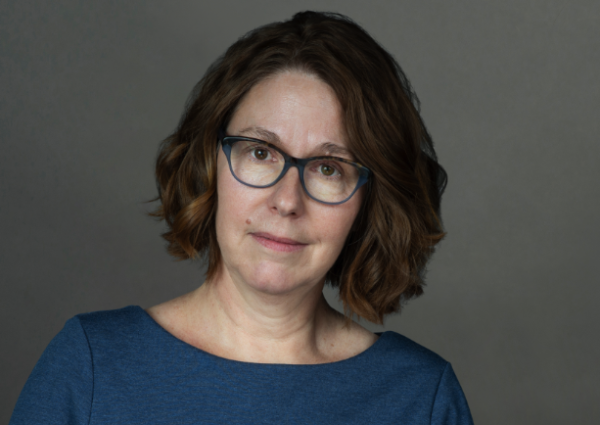
Rebecca Gibbins (she/her)
- Availability:
- Accepting New Clients
- Session Format:
- PhoneIn-Person
- Office Days:
- TuesdayWednesdayThursdayFriday
- Clientele:
- Adults (18+)
About
Doing psychotherapy, “going to therapy,” is about working with our conscious and unconscious awarenesses of how we may have been impacted by the people and the world around us. We do this by sharing with a therapist the stories, narratives, and moments of our lives— past, present, and future.
We use words to do this. Words can be both sound and symbol: there is an immediacy to them. Our words quickly and effectively fill in the gaps between the pieces of things, fill in for things, stick things together. Language is our most obvious way to link with others.
However, we also communicate with our silences, with the spaces between our words. We speak with our laughter and our tears; with our eyes and how they meet, or not; with our breath, our movements, and our body language.
In psychotherapy, we tell our stories in all of these ways, as we try to make our own sense out of being human in this world. And, over time, something elemental can be reclaimed. Parts of us can emerge in new ways. The ways we see and feel about ourselves gradually change. The way we live does, too.
During our conversations, my role as your therapist will be to be present with you, no matter what comes up for you. I strive to be curious, steadfast, non-judgemental, and kind.
As your trust develops, you may go deeper into your “stories,” your history. These are your way of expressing who you are and how you feel. You may begin to identify patterns, habits of being, and relating; to trace the threads that connect you to your life.
The work will be led by you. I will listen, and there may be questions along the way. An important thing to remember is that I am trained to listen carefully. I listen for what you are trying to tell me even when you are at your most quiet; even when you are silent.
I listen and witness so that I can support you in your work to better understand, and find faith in, yourself.
The goal is not to try to get back to being the same as we were before we broke or were broken; not to “recover”. It is to feel our way together toward a place where you can gently and hopefully be able to know better how lovable you are, how intelligent you are, how strong you are; and to recognize yourself as a resourceful, creative, and wise human being.
The word psychotherapy comes from the ancient Greek words psyche, meaning “soul, breath, mind” and therapeia, meaning “healing”. The word kintsugi means “gold joinery” in Japanese, and is the ancient art of using resin and gold dust to repair broken pottery.
There are a few different kintsugi techniques.
The crack technique uses the gold mixture as glue to re-attach broken pieces; the piece method is when a fragment is missing and the space is filled instead with gold; the joint call method uses a similarly-shaped fragment in place of a missing piece.
In the end, the bowl – or vase, or plate – is both old and new; changed, yet the same; its damage incorporated into a stronger and differently-beautiful version of itself. Practitioners speak of the meditative nature of the work, and of how an object will seem to reveal itself to itself, their work more of a channelling than an imposition.
Similarly, in psychotherapy, a person may sometimes gather up pieces of themselves and reattach them; sometimes replace what’s missing with what they have now; sometimes choose to fill in the spaces with something new. It is a process of self-discovery, re-connection, self-acceptance, self-forgiveness, and love.
At its very best, psychotherapy moves us.
To a place of realignment. From feeling broken to feeling more whole. Towards being more able to know and hold our own shape within the world.
I see clients for both in-person sessions at my office in Toronto’s north Annex and for telephone work. If you’d like to book a consultation, please contact me by email. My email address is rebecca@kintsugipsychotherapy.ca. We’ll have up to half an hour for this initial conversation, and there is no charge. It’s an opportunity for us to briefly talk, to see if working together might be a good fit for both of us.
Issues
- Abuse (intimate partner violence)
- Aging and Age-Related Concerns
- Anger
- Anxiety
- Career Dissatisfaction or Transition
- Climate Anxiety/Climate Grief
- Depression
- Existential Concerns
- Immigration and Newcomer Experiences
- Life Crisis and Transitions
- Loneliness and Isolation
- Loss and Grief
- Parenting and Co-Parenting
Approaches
Contact
- Email:
- rebecca@kintsugipsychotherapy.ca
- Address:
- 244 Dupont Street, Main Floor
Toronto, ON M5R 1V7